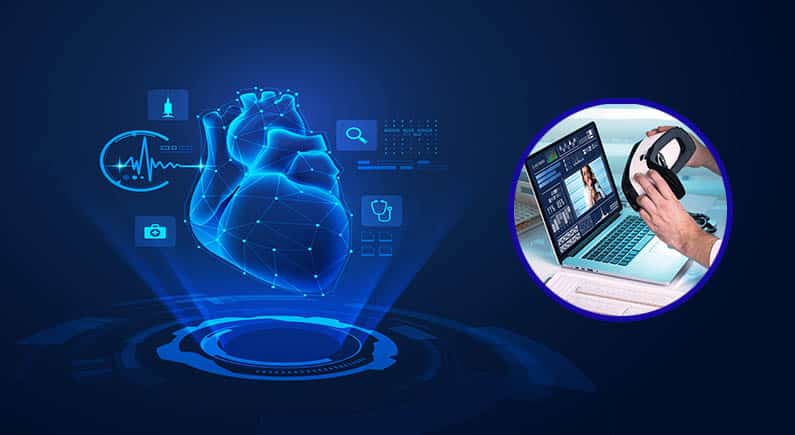
Michael Joe Cini
6th December 2021
“It’s Like Having a GPS Navigator in Front of Your Eyes”: The Metaverse and Medical Technology
From the World Health Organization using AR and integrated smartphone technology to fight COVID to psychiatrists using VR to treat PTSD, Metaverse-aligned technologies seek to disrupt the medical sector for the better.
In many ways, one of the most significant motive forces in scientific advancement is cross-pollination. Technological innovation in a single sector translates to other areas of the economy, hyper accelerating existing disruptions and opening up paths that many were not even aware could be opened. Hence, the digital revolution has spilled into the medical sector, opening up new avenues for healthcare and patient care. With the recent unveiling of the Metaverse emphasizing existing and planned investments in cutting edge technology such as virtual reality (VR), augmented reality (AR), mixed reality (MR) and artificial intelligence (AI), many investors both old and new are eager to turn these advancements into potent tools against disease, injury and mental illness.
In terms of disruption, the Metaverse has the potential to be one of the most significant evolutions in digital technology ever since the explosion of social media networks in the early 2000s. While more skeptical voices do say that the technological basis appropriate for Facebook’s (now Meta Platforms) ambitions is not at the stage to allow for mass adoption, what cannot be argued is the fact that massive amounts of capital are being funneled into R&D projects related to the Metaverse. In a statement coming directly from Facebook’s executive, Zuckerberg himself laid out to investors in the company’s third-quarter earnings report that they are currently planning to invest $10 billion in VR and AR during 2021 alone with costs expected to increase over time.
While the future may see an enhanced push for these technologies, Facebook has actually been acting as the vanguard for these emerging technologies for quite some time with their acquisition of Oculus Rift and its patented technology in 2014 for $2 billion dollars being a single example of this. We have also seen this investment bleeding into the medical technology sector with Facebook Reality Labs and Nexus Studios collaborating with the WHO Academy, the organization’s R&D incubator. One of the fruits of this cooperation was the creation of a mobile learning app tailored to train healthcare workers in the proper use of protective equipment. This app was used by 22,000 global health workers during the most severe year in terms of the pandemic with the content being translated in seven different languages.
Other examples of this type of innovation, such as the AR and GR-based technologies found in Oculus and HoloLens, have also been instrumental in training and medical operations in terms of surgery. After conducting the first AR surgery ever at John Hopkins Neurosurgery Spinal Fusion Laboratory in June 2021, the director of the institute and medical doctor Timothy Witham told CNBC News that “It’s like having a GPS navigator in front of your eyes.”
At the University of Connecticut’s medical center, UConn Health, Oculus Rift technology is being used as a tool to train orthopedic surgery residents. Using the eponymous headsets, educators in collaboration with PrecisionOS, a medical software company based in Canada, are using VR 3-D visualization to allow the students to practice operations such as putting pins into broken bones. Given the virtual nature of the simulation, the students are allowed to make mistakes and receive feedback that would further augment both the quality and the speed of the training. Microsoft’s HoloLens AR smartglasses have also seen medical use with Stryker, a med-tech company located in Michigan, using the device to augment the process of designing operating rooms for hospitals. Microsoft has also made inroads with a militarized use for MR with a contract worth $20 billion with the U.S military being secured in March, 2021.
Another overlap between the military and medical technology came about due to the initiatives of the University of Southern California Institute for Creative Technologies whose efforts to unite cutting edge technologies with mental health care has led to massive strides in the area. This is where Albert Rizzo, a registered psychologist and the director of the institute, came up with the concept of Bravemind, a VR-based exposure therapy made specifically to help treat soldiers suffering from PTSD. This form of therapy works by constructing a simulation of the location tied to the patient’s trauma and, guided by a specifically trained therapist, allows the patients to confront it in a safe and controlled environment with veterans from Afghanistan or Iraq being able to come to terms with their memories in simulated Middle-Eastern settings. Rizzo elaborated to CNBC that “patients use a keyboard to simulate people, insurgents, explosions, even smells and vibrations,” and this can be instrumental in allowing the therapy to be as immersive and effective as possible. Bravemind therapy is currently being used at several Veterans Administration hospitals and has shown to be very effective at treating Post-Traumatic related symptoms with additional trials ongoing.
To conclude, the cross-pollination between Metaverse technologies and medical initiatives is still in its infancy even if the above examples show that there is already a tangible innovative sector and a market for this form of technology. From Bravemind’s efforts to help veterans reintegrate into civilian life by allowing them to safely face their traumatic memories to WHO Academy managing to train 22,000 medical practitioners in the midst of a global pandemic through smartphones, while the technologies being used are grounded in virtual reality, their potential benefit to society could not be more concrete.
Information sourced from CNBC News and Forbes.




